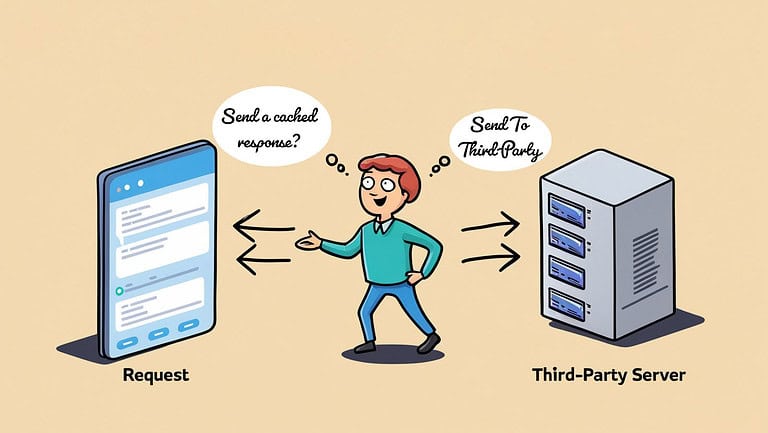Congratulations on your decision to become a certified Salesforce B2C Commerce Architect! Obtaining certification is an excellent way to validate your knowledge and ensure that it meets Salesforce’s high standards.
While practical experience and training can provide a strong foundation, preparing specifically for the exam never hurts. In this article, we will review the exam guide and highlight the areas you may want to focus on to increase your chances of passing the exam on your first attempt.
Design/Discovery (29%)
- Given a customer’s business requirement, create a technical specification that accurately reflects the business requirement.
- Given business and technical requirement details, create standard technical artifacts that are complementary and accurate to the design and project needs.
- Given business and technical requirement details, review implementation specifications for solutions, future growth, and gap analysis to stakeholders and provide analysis to defend if necessary.
- Given systems integration requirements & technical details, evaluate LINK cartridges applicable versions, 3rd-Parties’ technical specifications, and API documentation for integrations.
- Given the systems that are interacting with the platform, evaluate the integration points, data type and volume, data migration approach, and diagram the system architecture.
Capturing business requirements and providing the best solution for the business (or providing multiple – with pros and cons) is a crucial skill you need as an architect.
Using the knowledge of the platform and what it can and cannot do, is imperative to make the right decisions. And if the platform cannot do a particular feature, what tools to use (third-party or custom-built) in that situation.
- Trailhead: Salesforce Commerce Cloud Architect Roles: Quick Look
- Trailhead: Commerce Cloud Features
- Trailhead: Salesforce B2C Commerce Client Analysis
- Trailhead: Architecture of Salesforce B2C Commerce
- Trailhead: Project Documentation for Salesforce B2C Commerce Functional Architects
- Trailhead: Project Documentation for Salesforce B2C Commerce Technical Architects
- Trailhead: Salesforce B2C Commerce Functional Consulting
- Trailhead: Salesforce B2C Commerce Functional Consulting Strategy
- Trailhead: Salesforce Architecture Diagrams: Quick Look
- Trailhead: Architecture of Salesforce B2C Commerce
- Trailhead: Salesforce B2C Commerce Import & Export
- Trailhead: Einstein Product Recommendations for Commerce Cloud
- Trailhead: Salesforce B2C Commerce Storefront Search
- Trailhead: Salesforce B2C Commerce Storefront Sorting Rules
- Trailhead: Smarter Search with Commerce Cloud Einstein
- Trailhead: Salesforce B2C Commerce Campaigns and Promotions
- PLC: B2C Commerce: Frontend Architectural Options
- Webinar: Storefront Reference Architecture (SFRA) overview
- Let’s GO-LIVE: The Salesforce B2C Commerce Cloud Environment
- Salesforce (Commerce) Payments: Payment Integration Simplified
- The Salesforce B2C Commerce Cloud Entity-Relationship model explained
- AI (Einstein) in Salesforce B2C Commerce Cloud
- What is OCI (Omnichannel Inventory)
- B2C Commerce: LINK Certification Guide
- B2C Commerce: Einstein
- B2C Commerce: Release Notes
- B2C Commerce: Videos
- Account Manager
- Control Center
Build (19%)

- Given a set of technical specifications, evaluate the implementation process to ensure the solution meets the business requirements.
- Given an implementation, validate that best practices are followed and guide their usage so that the end solution is secure, performant, and modular.
- Given a complex issue or set of issues, guide a development team in the steps toward resolution.
- Given an implementation and known KPIs, support in load testing, evaluate results, and ensure the implementation meets expectations.
- Given a collection of cartridges and data, define a process to compile and deploy to Salesforce environments.
Once all the requirements have been captured and we have worked out a design for the project(s) – it is time to start building! But does what we are building comply with the original requirements? Or what if we hit a wall in the middle of the implementation? How do we handle these kinds of situations?
This is another key skill of the B2C Commerce Architect!
- Trailhead: Salesforce B2C Commerce Project Management
- Trailhead: Salesforce B2C Commerce Trust Site
- Trailhead: Salesforce B2C Commerce Storefront Security Strategies
- Trailhead: Salesforce B2C Commerce Roles & Permissions
- Trailhead: Tools & Resources for Salesforce B2C Commerce Developers
- Trailhead: Salesforce B2C Commerce On-Demand Sandboxes
- Trailhead: Build Processes and Unit Tests for Salesforce B2C Commerce Technical Architects
- Trailhead: Salesforce B2C Commerce Cartridges
- Trailhead: Salesforce B2C Commerce Storefront Implementation
- Trailhead: Salesforce B2C Commerce Storefront Localization
- Secure Coding in Salesforce B2C Commerce Cloud
- B2C Commerce: Security Guide
- Data Protection & Privacy
Monitoring/Troubleshooting (14%)
- Given an implementation, evaluate the end-to-end needs for custom logging configuration, the ability to leverage Log Center, and investigate other tools required to identify potential and existing issues for governance, trust, and best practices.
- Given an implementation performance issue, demonstrate the ability to identify and address existing and potential performance issues, including quota violations, cache utilization, service timeouts, and optimization opportunities.
- Given an implementation issue, demonstrate the ability to identify root causes and recommend solutions.
- Given an implementation, evaluate and adjust the system proactively to ensure a healthy, scalable system for current and future business operational needs.
Keeping an eye out on what you build is not just important, it is crucial to have any project be successfully launched. Using standard tools out-of-the-box available and third-party solutions, this is something that can be easily achieved.
- Trailhead: Salesforce B2C Commerce Cache for Performance & Scalability
- Trailhead: Salesforce B2C Commerce Site Performance Analysis and Monitoring
- Trailhead: Salesforce B2C Commerce Reports & Dashboards
- Trailhead: Salesforce B2C Commerce Promotions Dashboards
- Trailhead: Salesforce B2C Commerce Sales and Products Dashboards
- Leveraging Server-Side Caching to Improve SFCC REST API Speed
- How to change the code Compatibility Mode in Salesforce B2C Commerce Cloud
- Reports & Dashboards - How to Set Up Access
Integrations and Customizations (22%)
- Given a business requirement of integrating with a 3rd-Party web service identify what protocol (SOAP/REST) and what approach (real-time vs. batch processing) should be used and then apply all security strategies and best practices that SFCC can support.
- Given a set of batch process requirements, leverage the productized Job Framework for batch process integration.
- Given a list of third-party LINK cartridge integrations, identify “legacy” LINK cartridges that are still using Pipelines and define an integration approach with Controllers.
- Given a set of real-time integration requirements, leverage the productized Service Framework for real-time integration.
Salesforce B2C Commerce Cloud has many features out of the box, but it can’t do everything. Any project (or at least the majority) must deal with third-party integrations.
Knowing where to look and how to monitor these integrations is crucial as a B2C Commerce Architect.
- Trailhead: Salesforce B2C Commerce Third-Party Integration Strategies
- Trailhead: Salesforce B2C Commerce Scheduled Jobs
- Trailhead: Headless Commerce Basics
- Trailhead: Salesforce B2C Commerce SDK
- Trailhead: Headless Implementation Strategies for Salesforce B2C Commerce
- Trailhead: PWA Kit & Managed Runtime: Quick Look
- Submitting a file to a third party service in SFCC
- How to use OCAPI/SCAPI hooks
- What is the OCAPI session bridge?
- Delta exports in Salesforce B2C Commerce Cloud
- Get started with the OCAPI
Launch (16%)

- Given requirements for a site, set up aliases that follow SEO best practices and accurately land customers on desired domain, locale, and currency.
- Given a site launch checklist, identify rollback steps possibly required, plan post-production activities, and ensure all launch tasks are completed.
- Given a site launch, monitor launch activities that cover all system health indicators.
- Given dependencies between sources of site data, define jobs and data replication schedules.
- Given data migration scenarios, plan and support the data migration process.
Once we have analysed, built, and tested our solution – it is time to put it live! But what do we need to watch out for, and how do we get our production environment to spin?
As a Salesforce B2C Commerce Architect, you need to know where all the buttons and knobs are to get your environments up and running!
- Trailhead: Salesforce B2C Commerce Replication
- Trailhead: Salesforce B2C Commerce SEO Meta Tags
- Trailhead: Salesforce B2C Commerce SEO URLs
- Trailhead: Salesforce B2C Commerce XML Sitemaps
- Trailhead: Salesforce B2C Commerce Hostname Aliases
- Trailhead: Salesforce B2C Commerce Site Readiness Assessment
- Trailhead: Salesforce B2C Commerce Launch Readiness
- Trailhead: eCDN for Salesforce B2C Commerce
- Trailhead: Holiday Season Readiness with Salesforce B2C Commerce
- Let’s GO-LIVE: SEO
- Let’s GO-LIVE: Customer Migration
- Let’s GO-LIVE: eCDN
- How to set up the eCDN for Staging in Salesforce B2C Commerce Cloud
- AB Testing and Testing Methodologies
What if I fail the exam?
Failing a certification exam should not be considered a catastrophic event, especially one to become a Salesforce Certified B2C Commerce Architect. It is essential to understand that even if you have experience in successfully implementing Salesforce B2C Commerce Cloud, you may still need to pass the certification exam.
During your project, you only had the opportunity to explore some aspects of Salesforce B2C Commerce Cloud and SFRA. It’s best to take note of the questions that gave you trouble, as these may represent gaps in your understanding that need to be addressed.
Return to those topics, experiment with them in a Sandbox environment, and then resume your efforts to pass the exam. Remember, it’s always possible to get back on track!
What if self-study isn't my thing?
Not to worry, there are instructor-led courses available at Trailhead Academy! One specifically to become a Salesforce B2C Commerce Architect: ARC300.
Can I wing it?
Undoubtedly, passing the B2C Commerce Architect certification exam can be a challenging task, even for those who have extensive experience in Salesforce B2C Commerce Cloud and SFRA development across multiple years/projects.
It’s important to note that passing this certification exam is only easy if you have also worked on the configuration aspect of the Business Manager, including setting up search, category management, Jobs, and OCAPI, among others.
However, with multiple projects and at least 3-4 years of experience, passing the exam without preparation is feasible. In my case, I passed the exam on my third attempt, whereas my first try was entirely unprepared- which I do not recommend.
It’s vital not to take the exam lightly, as it’s a certification exam, not a Trailhead module. Therefore, adequate preparation and a thorough understanding of the exam content are necessary to achieve success.



